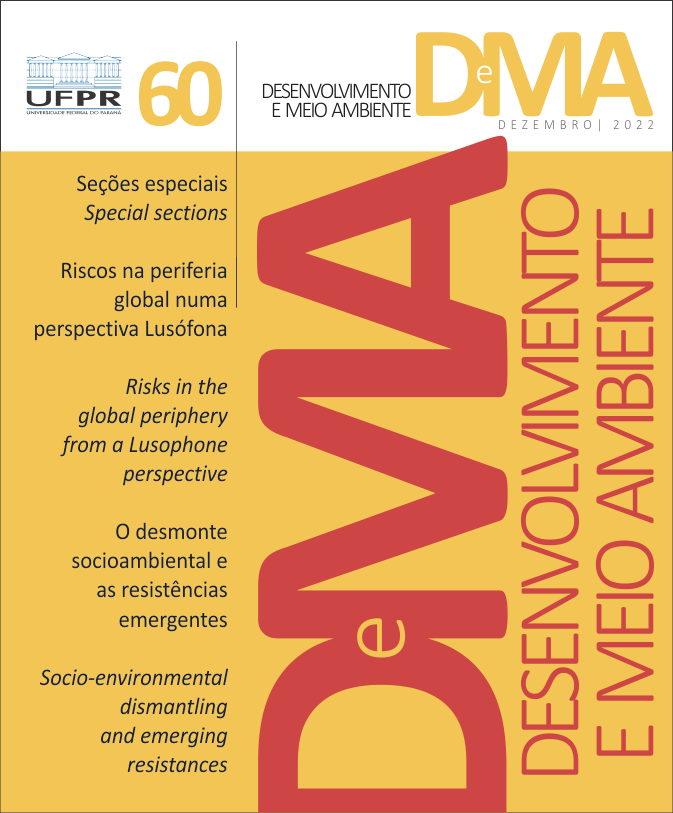Dinâmica do uso e cobertura da terra nos municípios produtores da cana-de-açúcar (Saccharum officinarum l.) no Maranhão
DOI:
https://doi.org/10.5380/dma.v60i0.79091Palavras-chave:
supressão de vegetação nativa, agricultura, MapBiomasResumo
Este estudo analisa as modificações na cobertura e no uso da terra em municípios produtores da cana-de-açúcar no Maranhão no período compreendido entre 1998 e 2018. Para tanto, utilizaram-se dados secundários disponibilizados pela Pesquisa Agrícola Municipal (PAM), como as variáveis produção e cultivo da cana. Também se lançou mão do Projeto MapBiomas, pelo qual se obtiveram imagens georreferenciadas e dados sobre cobertura e uso da terra, tais como áreas de agricultura, pastagens, vegetações nativas, incluindo as savânicas, campestres e florestais, corpos d’águas e áreas não vegetadas. Ademais, procedeu-se os cálculos das evoluções das classes no período de estudo e a análise de correlação entre agropecuária e supressão vegetacional. Desse modo, realizaram-se análise gráfica, tabular e cartográfica. Os resultados evidenciaram a quantificação das áreas de vegetações nativas suprimidas nos municípios maranhenses localizados nos biomas Amazônia e Cerrado. Constatou-se aumento das áreas destinadas para a agropecuária, incluindo agricultura e pastagens plantadas. O crescimento das atividades agropecuárias correlacionou-se positivamente com a supressão de vegetação nativa no conjunto dos municípios produtores da cana. Portanto conclui-se que é necessária a implementação de políticas públicas para promover a conservação da vegetação nativa.
Downloads
Publicado
Como Citar
Edição
Seção
Licença
Os Direitos Autorais sobre trabalhos publicados nesta revista são do autor, com direitos de primeira publicação para a revista. O conteúdo dos trabalhos publicados é de inteira responsabilidade dos autores. A DMA é um periódico de acesso aberto (open access), e adota a licença Creative Commons Atribuição 4.0 Não Adaptada (CC-BY), desde janeiro de 2023. Portanto, ao serem publicados por esta Revista, os artigos são de livre uso para compartilhar (copiar e redistribuir o material em qualquer suporte ou formato para qualquer fim, mesmo que comercial) e adaptar (remixar, transformar, e criar a partir do material para qualquer fim, mesmo que comercial). É preciso dar o crédito apropriado, prover um link para a licença e indicar se mudanças foram feitas.
Os conteúdos publicados pela DMA do v. 53 de 2020 ao v. 60 de 2022 são protegidos pela licença Creative Commons Atribuição – Não Comercial – Sem Derivações 4.0 Internacional.
A DMA é uma revista de acesso aberto desde a sua criação, entretanto, do v.1 de 2000 ao v. 52 de 2019, o periódico não adotava uma licença Creative Commons e, portanto, o tipo de licença não é indicado na página inicial dos artigos.




